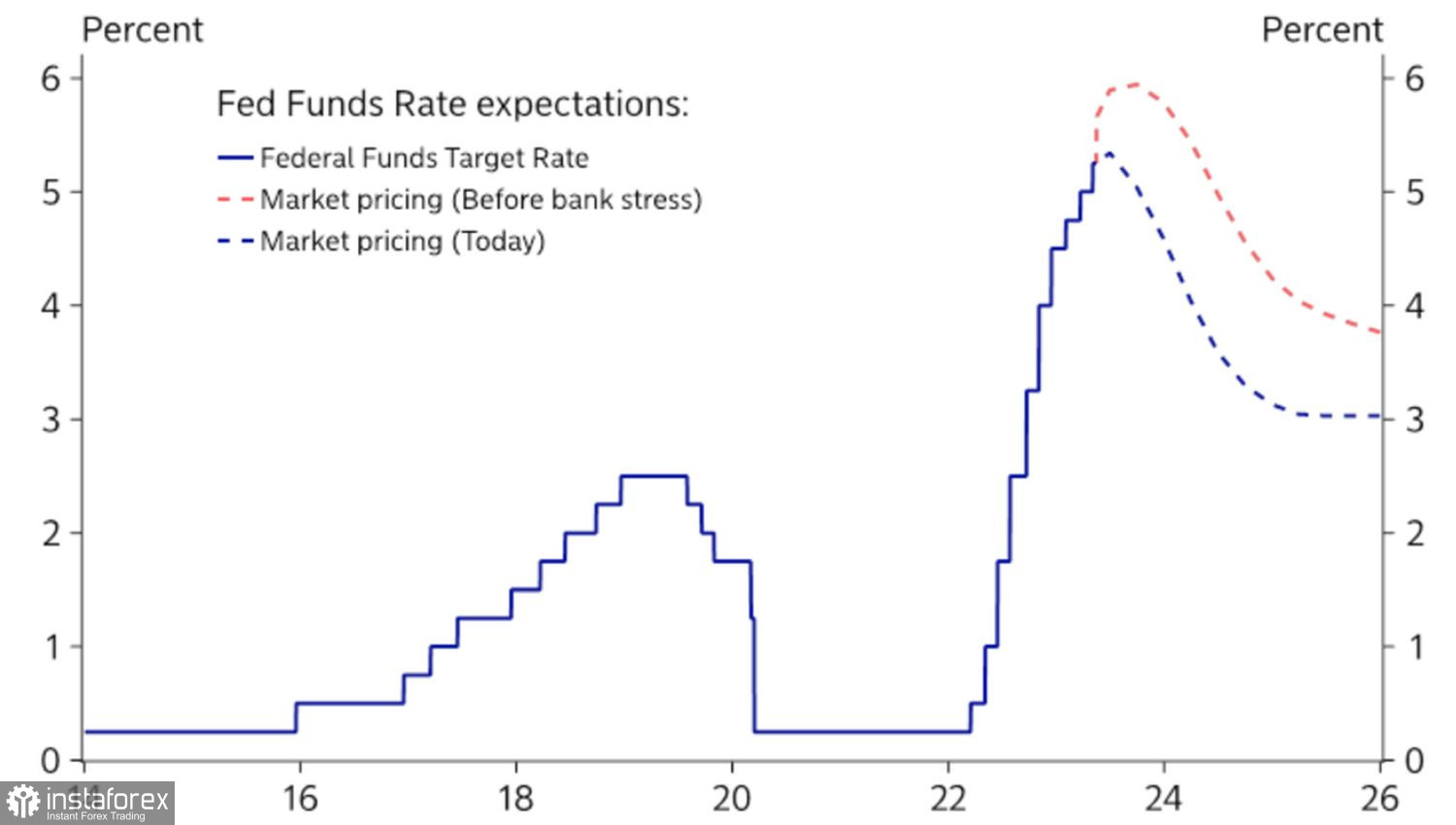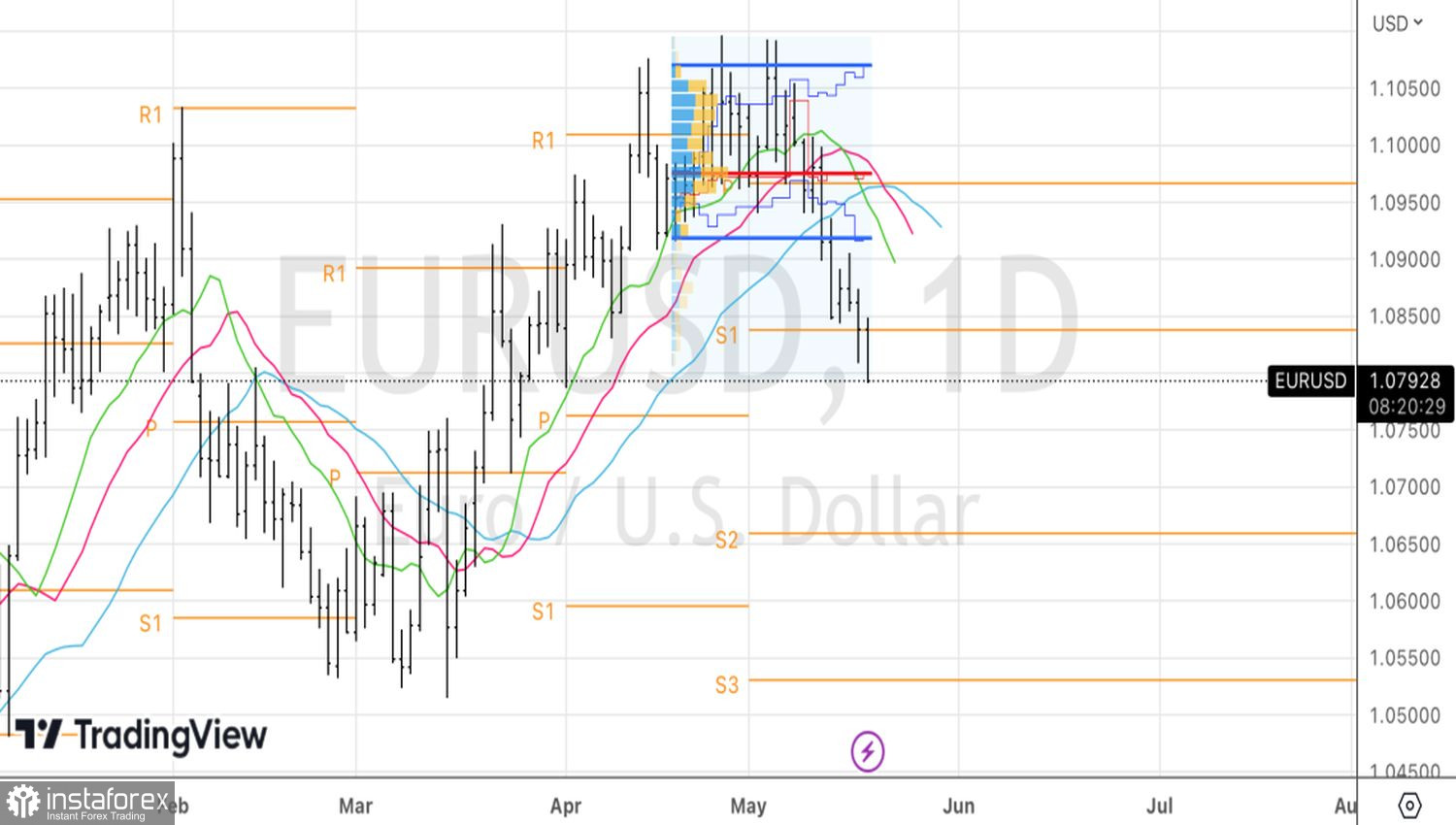It does not matter how far the European Central Bank is willing to go in raising rates. The main point is that the Federal Reserve does not intend to lower them. Danske Bank predicts that the ECB will raise borrowing costs three more times - in June, July and September - to 4%. However, this will not prevent EUR/USD from falling to 1.06. The company estimates the fair value of the euro at $0.9, which suggests huge potential for the major currency pair to fall within 1-3 years. This view contrasts with the Bloomberg experts' consensus estimate of 1.12 by the end of the year. However, for now, Danske Bank is basking in the spotlight.
The credit institution is betting on the nominal and real yield differential of US and German bonds. Even if the Fed stops and keeps the federal funds rate at a peak of 5.25% for a long time, the difference in debt yields will continue to stack up in favor of the United States. This will encourage capital flow from Europe to North America and further decline in EUR/USD. Danske Bank maintains its strategic case for a lower EUR/USD based on relative terms of trade, real rates and relative unit labour costs.
Be that as it may, expectations of a dovish pivot by the Fed were clearly overstated. Their current decline underlies the euro correction against the U.S. dollar. While before the April U.S. jobs report the odds of a monetary expansion in September were estimated at 90%, the figure has now fallen to 39%. However, in November the probability of a dovish pivot is 3 to 4. Its decline would allow EUR/USD to continue its correction.
Market Expectations for the Fed Funds Rate

Thus, the lagging cycle of monetary tightening by the ECB compared to the Fed is unlikely to help the euro. Will the economy be able to lend a hand to the regional currency? The EUR/USD rally from November to April was partly due to a change in views on the state of health of the world's leading countries. The strong US economy in 2022 was supposed to weaken under the influence of the Federal Reserve's most aggressive monetary restriction in decades. It hasn't.
On the contrary, faith in China's rapid recovery from the pandemic and the ability of the eurozone to avoid recession in the face of an energy crisis faithfully served the EUR/USD bulls until early May. Then everything changed. A series of disappointing reports on the currency bloc made investors doubt its stability. China is not growing as vigorously as the euro fans would like it to.

Alas, neither the divergence in monetary policy between the ECB and the Fed nor the differences in economic growth between the eurozone and the US are capable of providing the same support for EUR/USD as before. A correction under such conditions seems inevitable. The question is, how deep can the pair sink?
Technically, on the EUR/USD daily chart, you can find support near the pivot levels of 1.0755-1.0765. If they do not hold, the retracement will continue towards 1.071 and 1.066. We hold the previously formed shorts and and continue to build up.
 English
English 
 Русский
Русский Bahasa Indonesia
Bahasa Indonesia Bahasa Malay
Bahasa Malay ไทย
ไทย Español
Español Deutsch
Deutsch Български
Български Français
Français Tiếng Việt
Tiếng Việt 中文
中文 বাংলা
বাংলা हिन्दी
हिन्दी Čeština
Čeština Українська
Українська Română
Română

